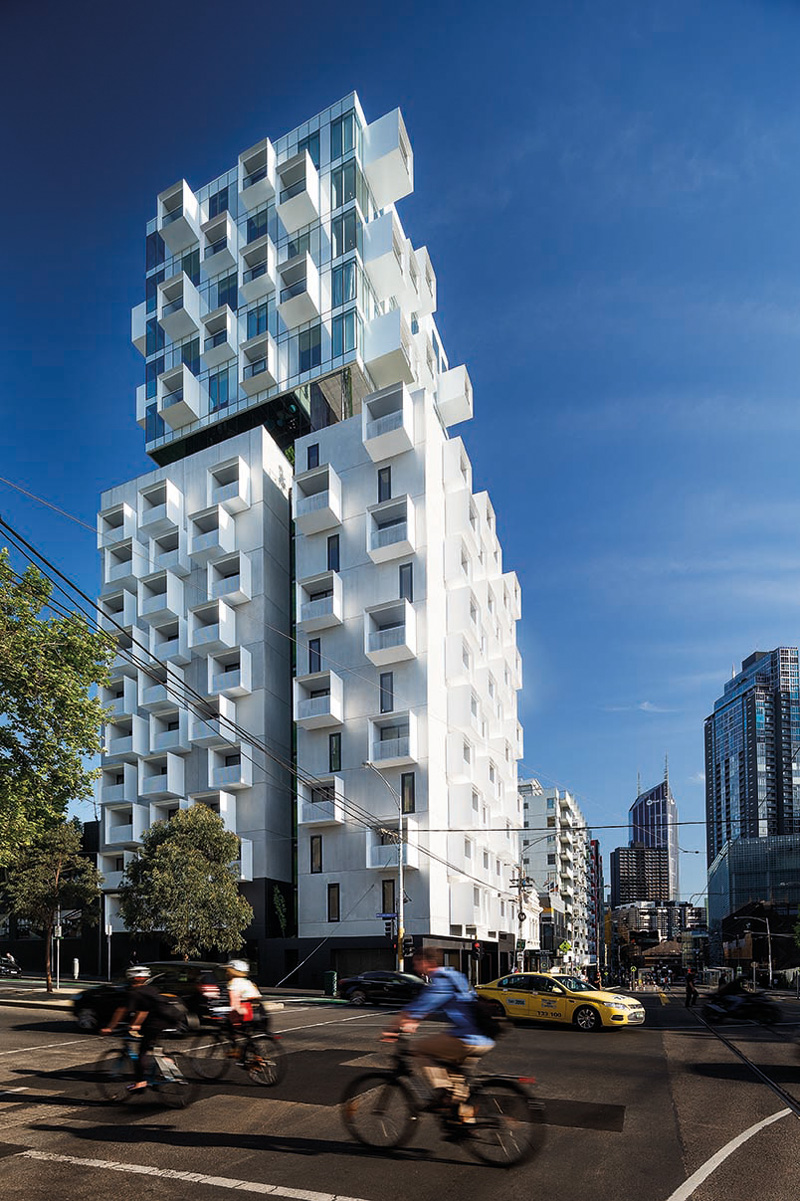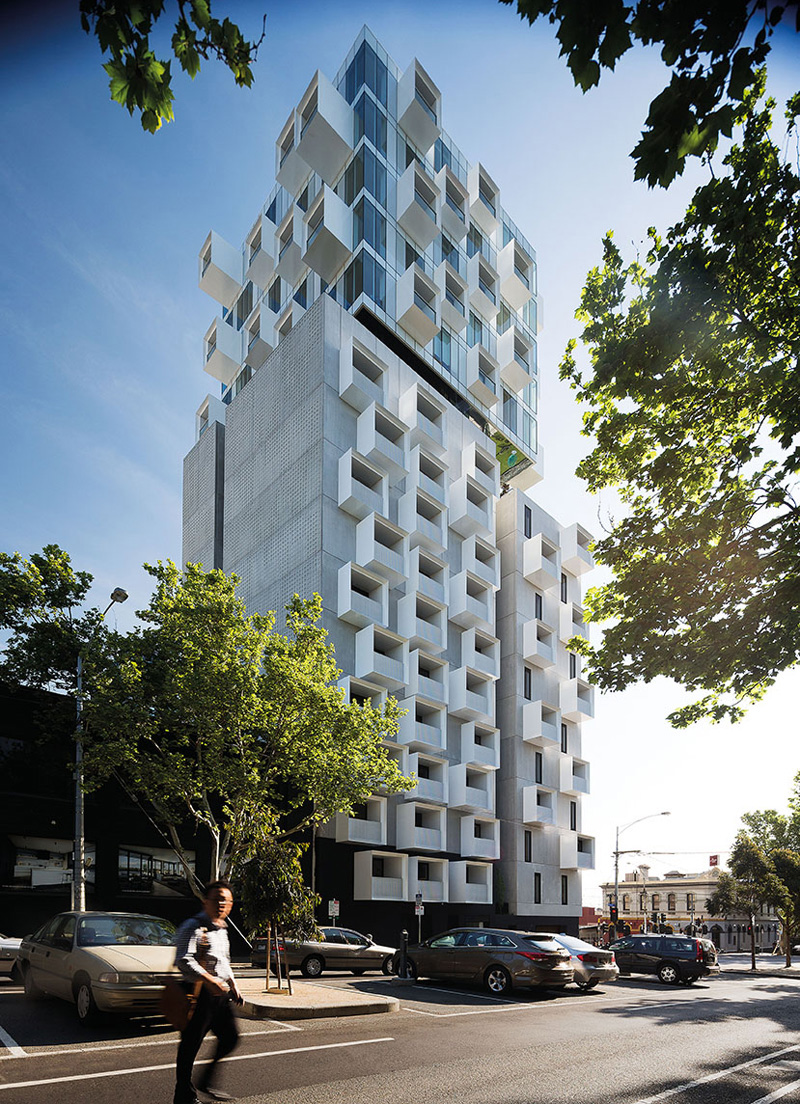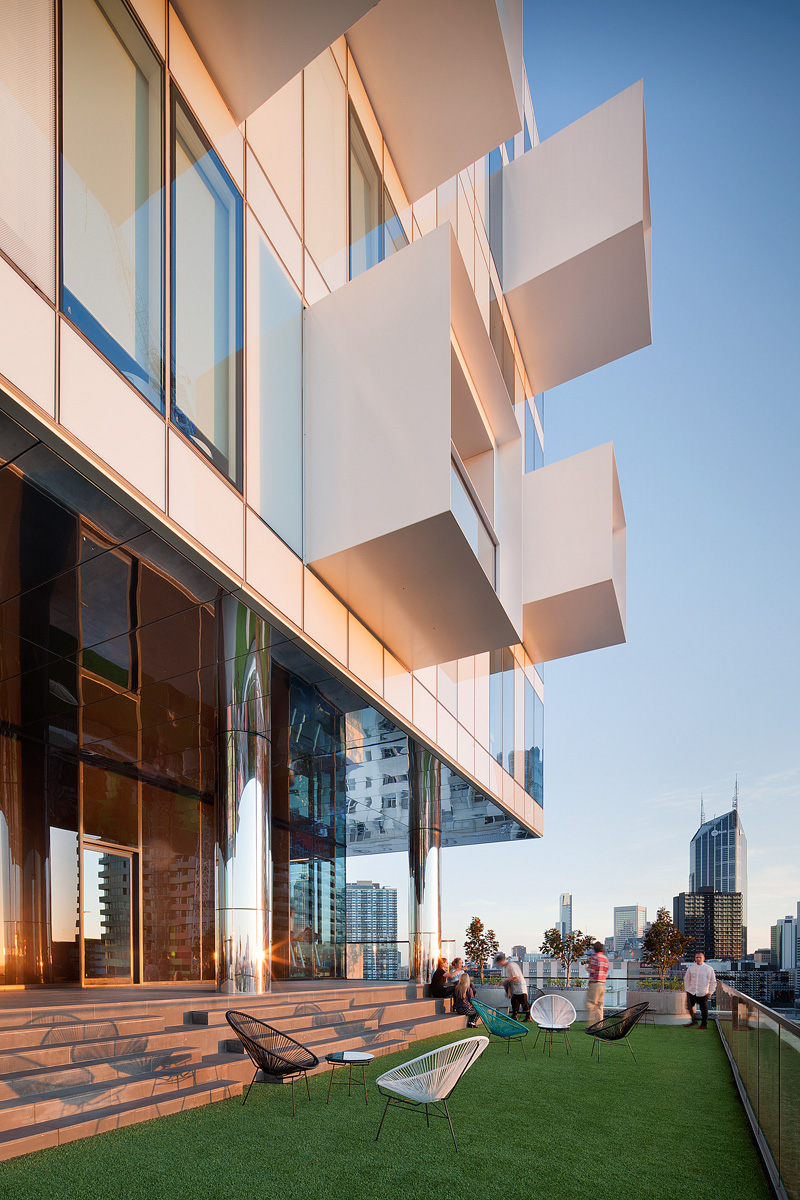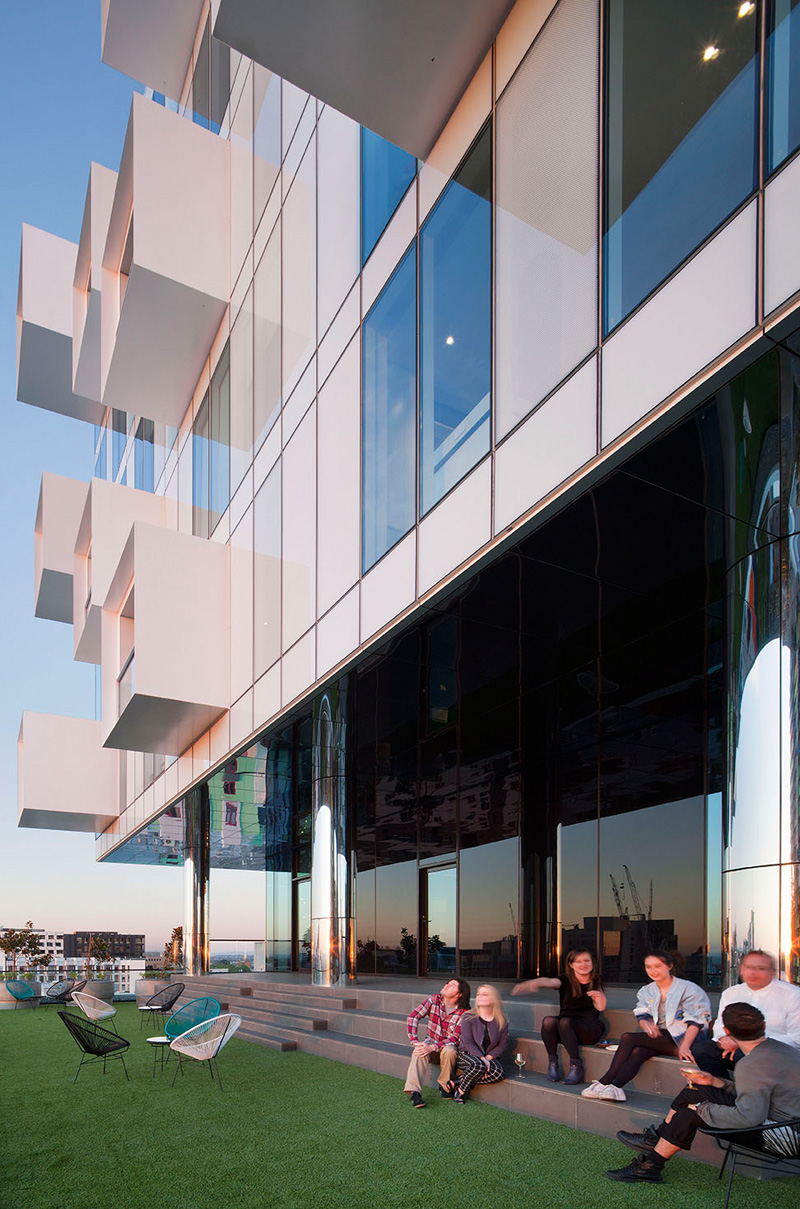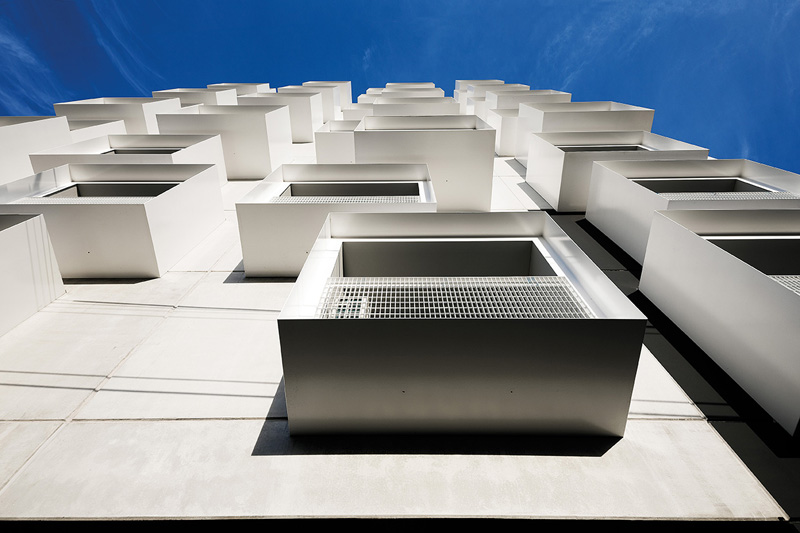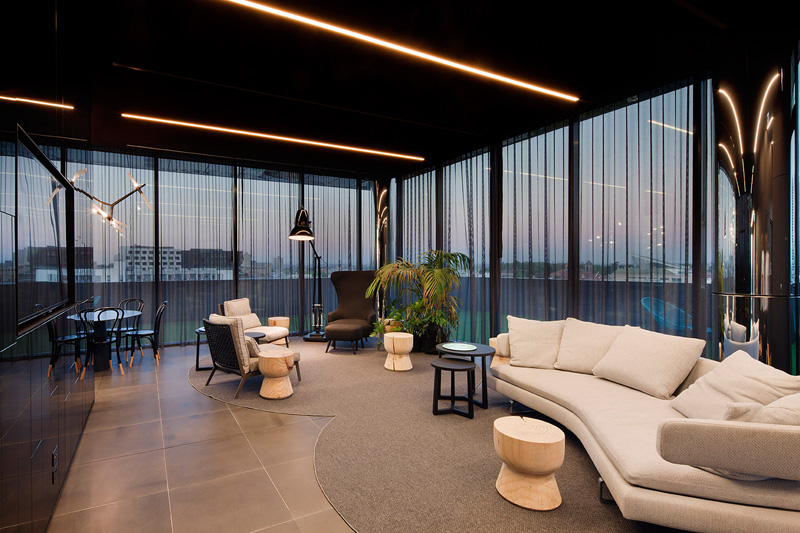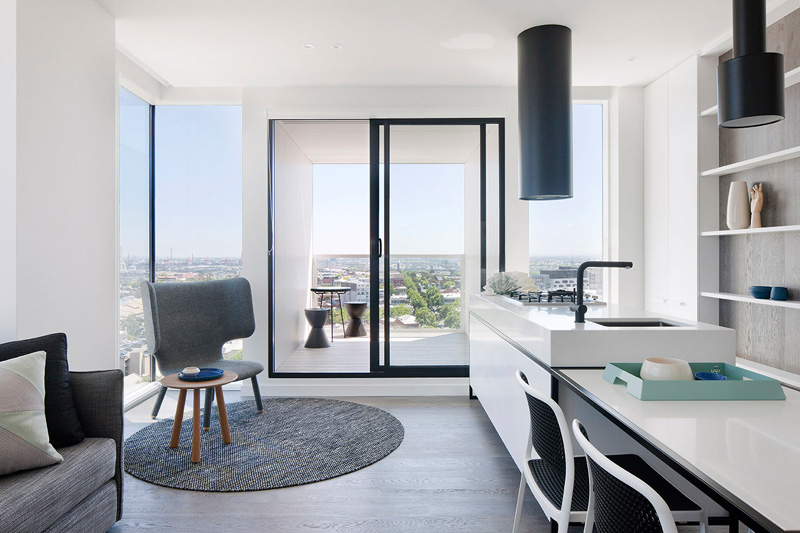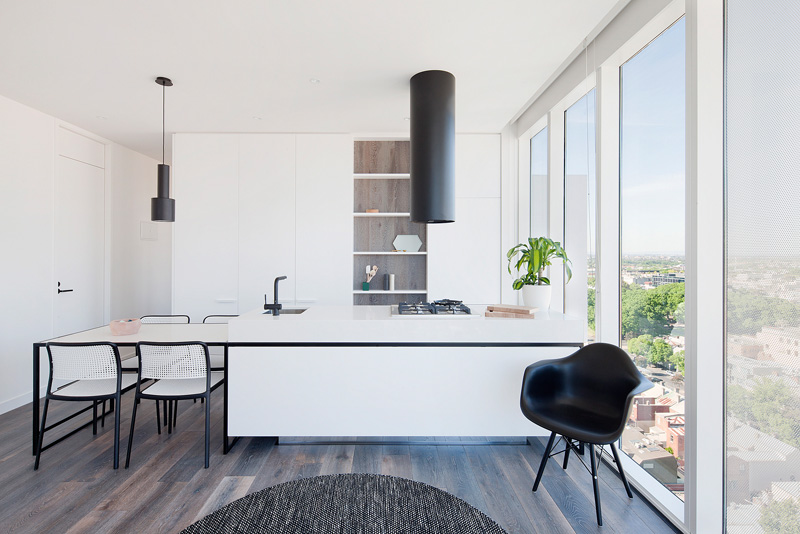Australian architecture firm Jackson Clements Burrows, have recently completed the Upper House project in Melbourne, Australia. The project, a seventeen storey residential tower, is home to 110 apartments and 2 commercial spaces.
The architect’s description:
The unique composition of the building mass was conceived through a series of urban design gestures. The first conceptual gesture entails anchoring the western portion of the building envelope to what we have termed a “line of continuity” that exists along Swanston St.
The eastern portion of the mass further anchors the building along Queensbury St. The combined mass is fragmented by a “ravine” that articulates two separate forms. The “ravine” provides an naturally ventilated “breezeway” where occupants access their homes, while also providing a sense of visual and spatial connection to the surroundings.
The podium is a solid form of natural concrete and projecting white steel loop balconies. Adjacent to Swanston St and Queensbury St the form is elevated above street level to introduce a partly transparent commercial plinth – articulated as a black reveal. Within this reveal, projecting steel looped windows to the commercial tenancies and the entry lobby, activate and engage with the street frontage.
An important consideration and compositional outcome is enabled through the programmatic activation of the building as a communal space at level eleven. As an implied physical break in the building “The Observatory” incorporates a lounge, gymnasium and dining space that overlooks a garden roofscape. This gesture activates the “skyline” in a way that provides amenity for residents while enabling the upper section of the building to appear separated from the mass below – a place where occupants can meet, rest, read, eat, and reflect. The mirrored soffit to the upper form creates reflections of the gardens and social activity, providing a visual cue to the elevated garden from street level.
The upper form materiality is white glass curtain wall that is partially transparent. The glass finish enables a degree of reflectivity and suggests a more ephemeral lightweight gloss surface that is offset against the matt concrete base. Across the upper and lower facades are a scattering of balconies and windows that tie the facades with an engaging three dimensional quality, through varying cantilevered depths and alternating window placements – a facade with its own topography.
The contrast between the lower and upper mass amplifies the sense of a formal break and the idea of a building which is floating across the skyline “like a cloud”. Upper House is a building that demonstrates a clarity in urban composition and social program that will engage with its context in a new and positive way.
Architects: Jackson Clements Burrows Pty Ltd Architects
Project Team: Tim Jackson, Jon Clements, Graham Burrows, Chris Manderson, Blair Smith, Simon Topliss
Consultants: Hamilton Marino (Builder), Rincovitch Consultants (Structural)
External photography by John Gollings – Gollings Photography
Internal photography by Shannon McGrath
